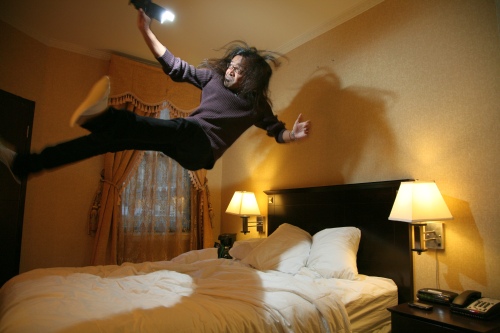Sensory Seeking vs. Sensory Avoiding in Adolescents with Migraine
Don’t be scared away by the headline. This is a somewhat expected, and yet rather interesting to think about, study of adolescents with migraine.
Behaviour is sometimes divided into the categories of “sensory seeking” and “sensory avoiding”. Yes, you probably already have a general idea what we’re talking about, but stay with me.

A “sensory seeking” individual seems to want or need more sensory input. A “sensory avoiding” individual may want to avoid more sensory input. We’re talking about colours, smells, noise, and so on. And these behaviours can sometimes be seen in the same person.
So if you were to guess, which category would a migraineur tend to fall into? Well, sensory avoiding, of course. Because migraine patients tend to be more sensitive, even when they’re not in the middle of a migraine attack.
This tends to be the case with adolescents as well, as a recent study confirms. This was not universally the case – but again, chances are the person with migraine is more likely to be a sensory avoider.
And this pattern connects with other issues, such as feelings of helplessness, “rumination” (a focus on your symptoms, causes, and consequences), and more pain. And this could lead to worse disability over time (for more on this, see Pain Catastrophizing and Your Headache).
This web of cause and effect is tricky. The answer is not that we need to turn an “avoider” into a “seeker”. However, it is helpful to recognize the difference. Essentially, to realize that not everyone is like you!
For example, let’s imagine a seeker and an avoider both live in the same house. One likes to do their homework with music playing, one does not. Guess what? It may be more than just simple preference. The music may really help the one person, it may really hinder the other.
How about incense in the house? Same thing. Two children – one likes to play rougher than the other. A “seeker” may stand really close to you when they talk – an “avoider” may back away. A seeker loves loud, sudden noises – an avoider just really does NOT.
Being aware of some of these differences does two things:
- It teaches us how to care about others – we really do wonder why everyone isn’t like us. It’s just human nature. Remember, that person may not just be “overly sensitive” or “unreasonable” or “just being difficult”. They may actually be quite different from you.
- It may be a warning sign of worsening migraine disability – if you’re seeing avoidance, it’s another reminder that this person needs to be diligent about finding good migraine treatment before things get worse.
For more on this topic, check out:
- Sensory processing patterns affect headache severity among adolescents with migraine (the study from The Journal of Headache and Pain)
- How Does Episodic Migraine Impact Sensory Processing in Teens? (another article on the study)
- Sensory Seeking and Sensory Avoiding: What You Need to Know (this is focused on children, but does give you some ideas about how this works)
- Sensory Processing and the Teenage Years (general thoughts about helping teens from a “sensory” standpoint)
